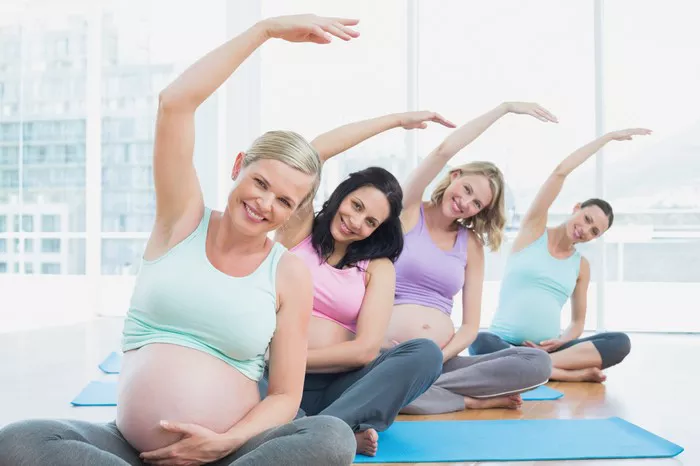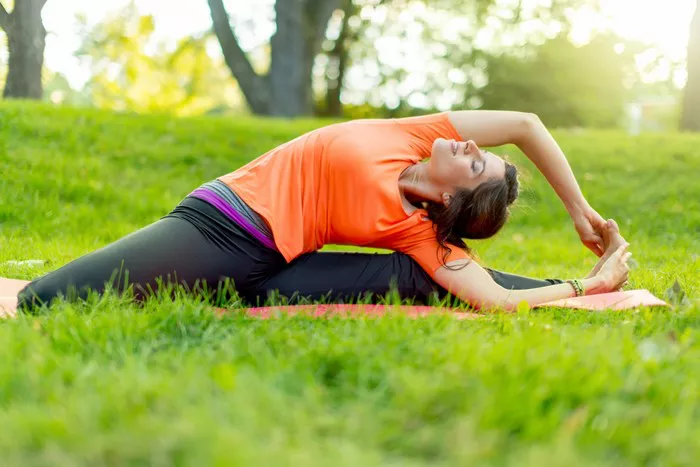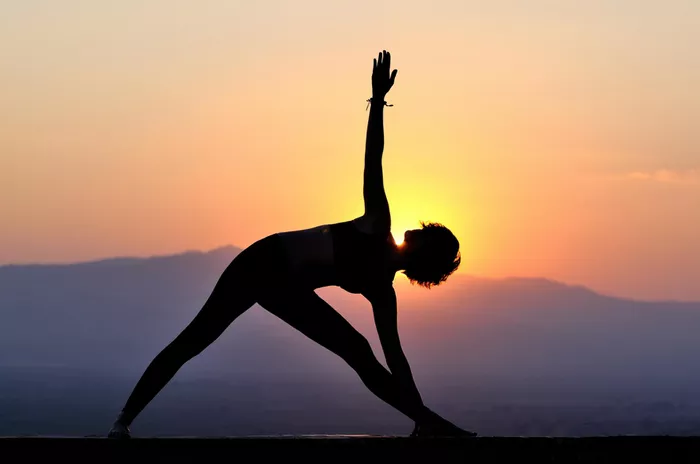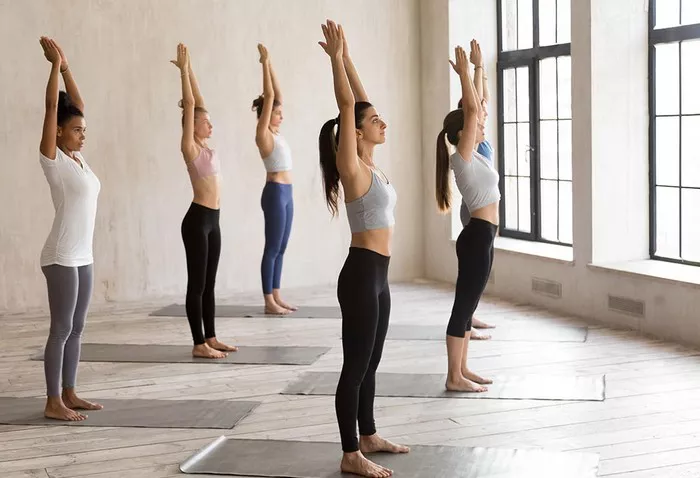Yoga, an ancient practice that encompasses physical postures, breathing exercises, and meditation, offers a diverse range of poses to increase flexibility, strength, and mental clarity. Among the many asanas (yoga postures), Upward Dog (Urdhva Mukha Svanasana) and Cobra (Bhujangasana) are two common backbends. Though these postures may look similar at first glance, they each have distinct purposes and offer unique benefits. In this article, we will explore the differences between Upward Dog and Cobra, delve into their specific benefits, and provide insights on how to perform them correctly to achieve optimal results.
What Is Upward Dog?
Upward Dog, or Urdhva Mukha Svanasana, is a backbend that primarily targets the chest, spine, and arms. This pose is commonly seen in Vinyasa or Ashtanga yoga sequences, often as part of the sun salutation flow.
In this pose, the body is lifted off the floor by pressing the tops of the feet and hands into the mat. The chest is open, the shoulders are pulled back, and the hips are slightly lifted. The pelvis remains slightly above the floor, and the lower body stays off the ground entirely. The arms are extended fully, and the gaze is directed forward or slightly upward.
How to Perform Upward Dog:
Start Position: Begin lying face down on the floor with your legs extended straight behind you. Place your hands on the mat beneath your shoulders and your elbows bent at a 90-degree angle.
Engage the Core: Draw your belly button toward your spine and engage your core muscles to prepare your body for the lift.
Press the Hands and Feet: Press the tops of your feet into the floor as you press your hands into the mat.
Lift the Chest: Inhale as you start to lift your chest and thighs off the mat. Straighten your arms while arching your back.
Open the Chest: Roll your shoulders back and down, opening up the chest and allowing it to expand fully. Keep your gaze forward or gently tilt your head upwards to lengthen your spine.
Hold the Pose: Maintain the position for a few breaths, ensuring your thighs and hips are lifted, and your arms are straight and engaged.
Release: To come out of the pose, lower your hips back down to the floor, release your arms, and gently lower your chest.
Benefits of Upward Dog:
Strengthens the arms, wrists, and shoulders: By supporting your body weight on your hands, you engage the arms, wrists, and shoulders, helping to build strength and stability.
Opens the chest and lungs: The pose promotes expansion of the chest and can aid in deepening your breath.
Stretches the spine: The deep backbend helps increase flexibility in the spine and can alleviate tension in the lower back.
Stimulates abdominal organs: By arching the back, you gently compress and stretch abdominal organs, which may help improve digestion and circulation.
What Is Cobra?
Cobra (or Bhujangasana in Sanskrit) is a classic yoga pose known for its ability to stretch the spine and chest while strengthening the lower back. Unlike Upward Dog, Cobra is often performed with the thighs remaining on the mat, creating a less intense backbend. This posture is a staple in both Hatha yoga and Vinyasa sequences and is frequently used in warm-ups or as part of the sun salutation flow.
How to Perform Cobra:
Start Position: Begin by lying face down on the floor with your legs extended behind you. Keep your feet hip-width apart, and your hands placed flat on the mat beneath your shoulders with your elbows bent.
Engage the Legs: Press the tops of your feet and legs into the mat, engaging your inner thighs and glutes to stabilize the lower body.
Lift the Chest: Inhale as you press your palms into the floor and begin lifting your chest off the mat. Keep your elbows slightly bent, and aim to create a gentle curve in your spine.
Lengthen the Spine: Ensure your shoulders are rolled back and down, away from your ears. This will help create space in the neck and allow for a full stretch in the chest.
Hold the Pose: Keep your legs grounded and engage your core to support the backbend. Hold the position for a few breaths, maintaining a gentle arch in your spine.
Release: Lower your chest and forehead back to the mat as you exhale, and rest your arms by your sides.
Benefits of Cobra:
Stretches the chest and shoulders: Cobra helps open up the chest, stretch the front of the body, and release tension in the shoulders.
Improves spinal flexibility: Like Upward Dog, Cobra also offers a deep backbend that helps to stretch the spine and improve its range of motion.
Strengthens the lower back: While Cobra is a gentler pose than Upward Dog, it still provides strength-building benefits for the lower back and the muscles surrounding the spine.
Stimulates digestion: By gently compressing the abdominal area, Cobra can stimulate the digestive system and promote better circulation to abdominal organs.
Relieves stress: Cobra is known for promoting relaxation by opening up the chest and allowing the heart to expand, reducing stress and anxiety.
Key Differences Between Upward Dog and Cobra
While both Upward Dog and Cobra share many similarities, they are distinct postures with subtle differences in alignment, intensity, and benefits. Let’s break down the main differences between the two:
1. Position of the Legs and Pelvis
Upward Dog: In Upward Dog, the thighs and pelvis are lifted off the floor entirely. The legs are extended straight, and the feet are firmly pressing into the mat.
Cobra: In Cobra, the thighs remain on the mat, and the pelvis stays grounded. This creates a more moderate backbend and makes Cobra accessible to a wider range of practitioners.
2. Depth of the Backbend
Upward Dog: Upward Dog offers a deeper backbend, as the chest, hips, and thighs are lifted off the floor, resulting in a more pronounced curve in the spine.
Cobra: Cobra creates a gentler backbend, with the chest lifting off the floor while the thighs stay grounded. The curve in the spine is not as intense as in Upward Dog.
3. Use of Arms
Upward Dog: In this pose, the arms are fully extended, with the elbows locked. The hands play a major role in lifting the chest and supporting the backbend.
Cobra: In Cobra, the arms are slightly bent, with the elbows close to the body. The arms provide support for the lift, but the back and legs play a more significant role in the position.
4. Intensity
Upward Dog: Upward Dog is a more intense pose, requiring more strength from the core, arms, and legs to maintain the position. It is more demanding on the body.
Cobra: Cobra is generally a gentler posture, focusing more on flexibility in the spine and chest, with less emphasis on strength. It’s a great option for beginners or those with less experience in backbends.
5. Breathing and Focus
Upward Dog: In Upward Dog, the breath tends to be deeper as the chest expands. The focus is on creating length in the spine while maintaining a strong connection to the core and arms.
Cobra: Cobra also emphasizes deep breathing, but the focus is more on the opening of the chest and the gentle stretch in the spine. The breath should feel smooth and steady.
When to Use Upward Dog vs. Cobra
Both Upward Dog and Cobra offer unique benefits, and knowing when to incorporate each posture into your practice can enhance your yoga experience.
Use Upward Dog When:
- You are looking to strengthen the arms, wrists, and shoulders.
- You want a deeper backbend to open the chest and spine.
- You are practicing more dynamic sequences such as Vinyasa or Ashtanga yoga.
- You need a challenge and are ready to engage your core and arms more actively.
Use Cobra When:
- You are a beginner or prefer a gentler approach to backbends.
- You want to improve spinal flexibility and stretch the chest and shoulders.
- You are focusing on a slower-paced practice, such as Hatha yoga.
- You are recovering from a mild back injury or simply want a less intense option.
Conclusion
Both Upward Dog and Cobra are invaluable asanas that help to stretch the spine, open the chest, and strengthen the back. However, they differ in terms of leg positioning, the depth of the backbend, and the intensity of the posture. While Upward Dog is a more intense backbend that requires more strength and engagement from the arms and legs, Cobra offers a gentler stretch with less intensity and is great for beginners or those looking for a more accessible version of the backbend.
By understanding the nuances of these two poses, you can tailor your yoga practice to suit your goals, whether that’s building strength, increasing flexibility, or simply promoting relaxation and well-being. Integrating both poses into your practice will allow you to reap the full range of benefits, helping you find balance in both body and mind.
Related Topics:





















